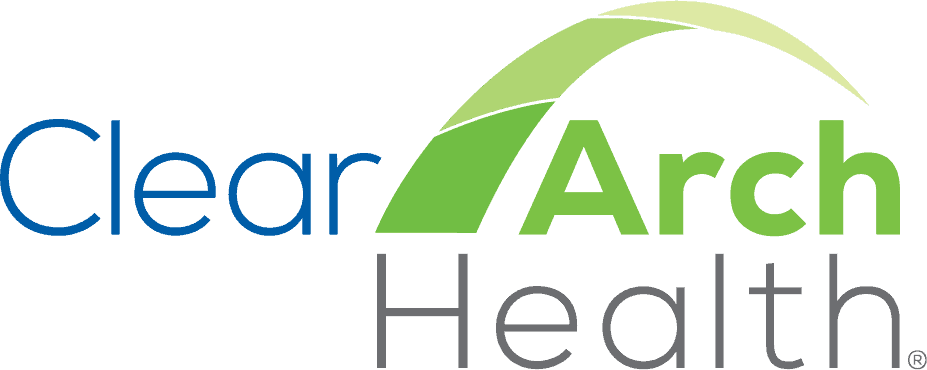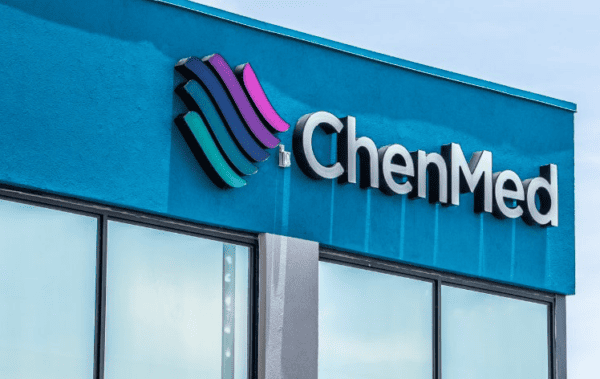|
Walmart-ChenMed Acquisition | Akili Pivot
September 18, 2023
|
|
|

|
|
Together with
|

|
|
|
“The opposite of burnout is engagement. When people are engaged, their work energizes them.”
|
|
ChenMed CEO Dr. Chris Chen
|
|

|
|
Although we touched on Walmart’s rumored acquisition of ChenMed last week, the ongoing talks are continuing to drum up lots of conversation around the healthcare strategy of major retailers and the potential implications if the deal goes through.
Here’s a quick primer on Walmart’s healthcare strategy, which so-far can be bucketed into three themes: Medicare and MA health plans, primary care, and employer virtual care.
- Back in 2018, Walmart looked into making one of the grandest entrances to the market imaginable with a $67B acquisition of Humana. When that didn’t materialize, it pursued a more balance-sheet-friendly approach by launching its own in-house Medicare and MA plans, as well as partnering with UnitedHealth on a co-branded MA plan.
- Walmart Health then debuted in 2019, and it’s a more comprehensive offering than it seems to get credit for. The 30 current locations provide primary care, urgent care, labs, imaging, optometry, audiology, and even dentistry.
- When Walmart scooped up telehealth provider MeMD in 2021, it began offering virtual primary care and behavioral healthcare through commercial payors and employers.
Enter ChenMed, a senior-focused primary care provider with over 125 clinics across 15 states, making it the last major M&A target in the space following CVS-Oak Street and Amazon-One Medical.
- ChenMed also takes on full-risk risk for the cost of its patients’ medical care, incentivizing long-term relationships and preventive care as opposed to the typical retail clinic model focused on episodic needs.
The acquisition would stake Walmart’s claim in the primary care land grab, allowing it to continue its push into the ever-growing Medicare Advantage market while leveraging ChenMed’s proven platform instead of building from the ground up.
- At one point, Walmart had ambitions to open 4,000 of its own clinics – plans that have since been scrapped – yet now only has four new locations planned for next year after a string of operating challenges caused it to pump the brakes.
- With some of Walmart’s largest competitors diving head first into care delivery, and limiting the options of late entrants in the process, the timing makes sense to either go all-in or risk losing ground to the competition.
The Takeaway
The number of attractive primary care clinic operators isn’t getting any bigger, and Walmart’s window of opportunity is shrinking if it wants to take the side door into the industry. There isn’t much of a ceiling on the splash that Walmart’s $600B in annual revenue and 4,300 retail locations could make in healthcare, especially if it can pick up an operator like ChenMed with the expertise and track record to help pull it off.
|




|
|
Goodbye Staffing Shortages, Hello Peace of Mind
connectRN, the leading nurse community, provides highly qualified, W2 clinicians at rates you can count on. Post shifts, build relationships, and keep your community staffed with connectRN’s user-friendly platform.
|
|
Medallion Elevate is Where Innovation Meets Healthcare
As the leader in all-in-one provider network management, Medallion kicks off a premier one-day virtual conference on September 20th. Hear from industry leaders like Hims & Hers, Equip Health, and Optum, spotlighting groundbreaking healthcare operations strategies and tactics. With over 1,000 professionals attending last year, this year promises to be even more transformative. Secure your spot today.
|
|
The New Standard for Prescription Safety
Synapse Medicine’s quick-deploy Prescription Assistance API and components can be up and running in less than a day and instantly connect your HCPs to real-time drug data and prescribing support. Find out how easy it can be to equip your providers with the tools they need to ensure prescription safety and precision for their patients.
|
|
- Akili Pivots DTx Business Model: Digital therapeutics developer Akili Interactive is pivoting its core business away from the prescription-only route by making its FDA-approved EndeavorRx video game for treating ADHD available over the counter. Although the D2C health software path to market isn’t exactly known for being a walk in the park either, Akili generated $341k of revenue during a three month pilot of an OTC version of its app, and it’ll have until the end of 2025 to figure it out after laying off 40% of its staff to extend its runway.
- MDMA’s Impressive Phase 3 Results: MDMA is one step closer to becoming an approved treatment for post-traumatic stress disorder after MAPS published its phase 3 trial results – the final hurdle before submitting to the FDA. The results speak for themselves: 71% of patients who received just three sessions of MDMA-assisted psychotherapy saw their symptoms improve so much that they no longer met the criteria for a PTSD diagnosis. That easily beats the improvements reported for the two SSRIs currently approved for PTSD, putting MDMA on track for an FDA endorsement in 2024.
- Carenostics Seed Round: Carenostics landed $5M in seed funding to forward the development of its AI platform for early identification of chronic conditions. The models are uniquely tailored to each health system using local EHR data, then deliver prompts to clinicians with potential interventions when necessary. A marquee partnership with Hackensack Meridian reportedly leveraged Carenostics’ CKD models to identify 3x more CKD patients, while maintaining 5x fewer false positives than the current standard of care.
- 2022 Sees Record Health Coverage: New US census data shows that last year’s uninsured rate dropped for the second year in a row, from 8.3% in 2021 to 7.9% in 2022. That percentage matched the historic low first reached in 2017 (7.9%), with the Census Bureau calling out the American Rescue Plan Act and Medicaid expansion as top contributors. Disclaimer: the 2022 figures don’t reflect the millions of patients who lost coverage in the wake of Medicaid unwinding, so it wouldn’t be too surprising to see another jump next year.
- Privia + Navina: Privia Health is joining forces with AI startup Navina to deliver point-of-care clinical insights to the 3,800 providers that Privia’s helping transition to value-based care. Navina’s AI tech now integrates with Privia’s platform to interpret patient data such as visit notes, labs, and imaging to generate clinical summaries and recommendations in real-time. The goal of the partnership is to push more preventive care and close gaps in treatment while cutting down the time that providers spend fishing through the EHR for the same information.
- Specialists Crowding Out PCPs: KFF put out a nice viewpoint on how the US healthcare industry’s specialty-driven model has contributed to the disappearing class of primary care physicians. In 1980, 62% of doctor’s visits for patients aged 65+ were for primary care (38% were for specialists), but that ratio had exactly flipped by 2013. Part of the blame – and probably part of the solution – lies in a reimbursement structure that incentivizes surgeries / procedures over diagnostics / preventative care.
- Bold Series A: “Movement as medicine” startup Bold closed a $17M Series A round (total raised now $27M) to help Medicare Advantage beneficiaries improve their health through personalized exercise programs designed to decrease musculoskeletal pain and prevent falls. The programs are delivered through individually tailored virtual classes that can be done asynchronously, a format that’s reportedly driven a 182% increase in users’ weekly physical activity.
- Who You Gonna Call? An Out-of-Network Ambulance: Patients are getting slammed with hefty medical bills from out-of-network ambulance rides that they didn’t shop around for. FAIR Health found that nearly 60% of ground ambulance rides were out-of-network in 2022, and they remain a leading source of financial shock given that Congress specifically carved them out of surprise billing legislation. A congressional advisory committee plans to make recommendations on the issue in November, but the world’s funniest ophthalmologist Dr. Glaucomflecken already has his own solutions.
- Cancer Mortality Decline: In its 2023 Cancer Progress Report, the AACR highlighted how the cancer mortality rate has fallen 33% between 1991 and 2020, translating to 3.8M avoided deaths. A declining lung cancer death rate is playing a major role, which went from falling 0.9% per year from 1995-2005 to almost 5% per year from 2014-2020 due to less smoking and advances in early detection and treatment. In related news, the Cancer Moonshot initiative just announced ~50 new programs to accelerate testing, data gathering, and outreach efforts.
- Sempre Closes $15M: Sempre Health closed $15M in Series B funding to address the $100B/year problem of patients skipping their medications due to cost. To accomplish that, Sempre manages a two-sided network of payors and pharma manufacturers to dynamically adjust a patient’s OOP costs at the point of fill based on their individual adherence and benefit design. Aligning incentives to drive healthy behavior seems to be hitting the mark, with Sempre reporting that its program consistently improves adherence by over 20%.
- Lead’s Heavy Impact: New research in Lancet Planetary Health revealed the massive impact that lead exposure is having on heart disease, IQ scores, and the global economy. The authors estimate that 5.54M adults died from lead-caused heart disease in 2019 – 6x higher than previous estimates – while lead exposure caused children under 5 years-old to lose a collective 765M IQ points. Over 90% of lead’s CVD and IQ impacts occurred in poor countries, but it still delivered a hard-to-believe $6T burden on the overall global economy (6.9% of global GDP).
|
|
Patient-Centered Design for Diabetes Care
Glooko’s recently overhauled Mobile App makes it easier than ever for diabetes patients to organize, log, visualize, and share their data. Head over to this conversation with Glooko’s product and design team for a behind-the-scenes look at how patient-centered design is improving diabetes outcomes.
|
|
What’s Patient Engagement to a PAC Manager?
Nuance’s patient engagement guide for hospital execs shares the challenges faced by Patient Access Center Managers and explores how equipping them with the right solutions can help give every patient simple access to care.
|
|
Successful RPM Through End-to-End Support
From needs assessments and program deployment to security enhancements and call center monitoring, Clear Arch Health offers fully customizable support services to help you get the most from your RPM solution.
|
|
|
|
|